 39/44
39/44Table of Contents [Show]
Nuclear Throne Review
May 26th, 2020
Criticizing Nuclear Throne is risky business nowadays. The way the community perceives the game and its developers is nothing short of obsessive. Every single response to almost every single negative assessment reads the same way; don't like a mechanic? Get better. Don't like a character? You're not good at it. Find a weapon or upgrade weak? Perfectly balanced, as the devs intended it to be. The hostile minority that has spent countless hours using each of the characters and their abilities will always find a way to deflect your criticism.

Now look, I got both endings; I unlocked all characters and their B-Skins, as well as improved starter weapons and crowns for each one. I found most secrets (admittedly there weren't all that many of them), defeated all bosses, killed all unique enemies. I am not trying to be a contrarian. I feel like I have genuinely played the game to its fullest extent.
With that out of the way, I will say this - every single thing on the aforementioned list has left me disappointed. Not a single one of those features had a redeeming quality that would have made the purchase of the game worth it. Not one has appealed to me in my 165 hours of playtime. I will explain exactly why that is in this review.
On paper, Nuclear Throne is a Roguelite - a genre characterized by procedural level generation, permadeath, and the random appearance of upgrades and items throughout any given run. These elements aim to make adapting to the game difficult at first. I love Roguelites; FTL, EtG, TBoI are some of my favorite games out there. However, fans claim Nuclear Throne is a skill-oriented game, and that the random elements in it can't bend a veteran who has mastered the systems and mechanics put on offer by it.
I went in-game expecting exactly this; "Nuclear Throne is supposed to be hard, it's meant to test something in you that has to do with you. Perhaps your knowledge of enemy attack patterns, your ability to remember and recognize how to gain extra loot or level up efficiently, how to manage resources, how to exploit the level generation to your advantage."
Unfortunately, I found that Nuclear Throne's design philosophy, that draws similarities between other games in the genre but still not quite, lacks in any requirement of skill, strategy, or thinking on the players' part. In fact, Nuclear Throne relies on RNG just as much as other Roguelites, but likes to pretend it doesn't. It introduces elements that try to mitigate its randomness, but only end up detracting from the overall enjoyment of playing it.

My first example of that is the mutation system. Mutations are character upgrades gained upon leveling up through XP (rads) dropped by enemies and containers each stage. Upon gaining enough XP and exiting the area, the players are presented with 4 choices. These choices stem from a pool of linear stat boosts that change pickup drop rates, increase weapon accuracy, range, firerate or damage, or buff stats like health, movement speed and knockback.
Characters are able to level up 9 times in total; this is the timeframe given to them to find mutations with which to face the challenge of the lategame. Picking one mutation shuffles the rest back into the pool, resulting in different, crucial character mutations never appearing in the selection to begin with. There are 28 mutations, excluding one reroll, and Ultimates which are character-specific abilities only to be acquired if the players try for a bigger highscore instead of finishing the game - more on that later.
This, in turn, has the effect of making consecutive playthroughs very similar to one another. Furthermore, not receiving certain mutations throughout the run can make the game objectively more difficult. For example, in one run you may receive a mutation that lets you avoid death or makes you immune to instakill factors, while in another you won't have one or the other, or neither option whatsoever.
At this point it is important to note that this much can be expected from a Roguelite, but things are particularly bad in Nuclear Throne specifically due to the myriad of instakilling factors the game features - another point I will return to in a short bit. Most don't allow to do things you would've not otherwise been able to do without them. Affected stats change behind the scenes, usually by very small margins, only noticeable if you minimize the game and check the Wiki page of the game.
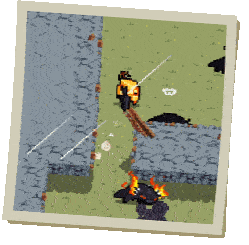
This mutation system then serves as a crutch for the crippling handicaps put on the players throughout each and every playthrough. The game is not regarded as difficult due to its capable enemies, but rather because the arbitrary restrictions placed upon you each level keep you forever vulnerable and weak. The way both health and ammo systems work is ultimately anti-player, and I will elaborate upon that in the next few paragraphs.
1. For starters, players spawn with an extremely limited ammo pool. Bullet weapons, arguably the weakest, have a very generous pool of 299 bullets, while every other weapon is arbitrarily limited to 55 units of ammo. This severely limits the stronger weapons, which often consume 2-8 ammo units per projectile. This also means that faster-firing weapons decimate your ammo pool in no time, and you are under constant threat of running short on ammo.
2. Ammo from pickups is given to one weapon (out of the two you carry) at random. Drops have a 50% chance to reload the weapon you actually want to use, perhaps one that is most suitable for the current situation or that is the lowest on ammo, and a 50% chance to reload the wrong weapon, that you don't want to use, or that is nearing its max ammo capacity.
Even with one ammo pool full, the scales are then tipped to make it a 60% chance to receive the ammo you need, and now a 40% chance to receive ammo that is completely random, that has absolutely nothing to do with your current weapon setup. What makes this worse is:
3. Not all enemies drop pickups, and those who can have varying chances to drop them. Said chances to drop pickups are not transparent to the player, even after visiting the Wiki. This means that even if you've been playing the game for an extended period of time, you never really know when or under which circumstances you'll be able to fill up on ammo reliably.
On the topic of health:

1. Health drops are dependent on ammo drops, which are dependent on your ammo pool. Health cannot spawn individually, and cannot spawn if the player isn't hurt. Moreover, the chance of an ammo drop to turn into health depends on how much health you're missing.
This means that in order to regain health, you have to be: low on ammo (which has nothing to do with health otherwise), and health has to be low enough for the game to drop you a health pickup (which is usually below half HP).
This sometimes puts you into a position where you desperately need ammo, but get health drops because you're hurt, or the other way around, need health to heal you to full HP (because some enemies deal a lot of damage, and can even kill you at that point), but don't get any because you're not low on ammo.
2. All characters except Crystal have a tiny health bar, and are always at point where a full HP pool can only save them from 2-3 hits - that is assuming they aren't hit by the:
3. Numerous instakilling factors the game features. And, let's get this out of the way once and for all - instakilling is bullshit, especially if enemies in the very first area are able to do it. Now, this would've been fine had the offenders dropped loot, but that is not the case. It's not a "high risk high reward" scenario, it's just "high risk no reward" all the time.
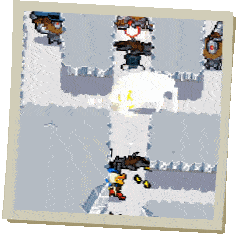
You are also given no indication as to which enemies deal contact damage and which don't. See that massive 3-headed robodog that is also the boss of the mid-game area? Yeah, touching it does nothing. See that little crystal in this one intermission stage? Touching it instakills any character, at any point in the game, with or without upgrades.
Enemies that are made of pure radiation damage you on touch, but then this one specific variant doesn't. The fire-breathing Salamander, which is the equivalent of the Scorpion in the third area, only hurts you as much a maggot, the weakest enemy in the game. Humanoid enemies deal no contact damage, but neither do robots. None of these arbitrary rules could ever make sense to a new player, and even now I'm still struggling to understand what the reasoning behind these decisions is.
You then take a look at what mutations players are expected to take; a mutation that increases max health. A mutation that makes players invincible to explosions and fire (which instakill otherwise). A mutation that gives players an additional "life" when lethally hit, making them immune to instakills. A mutation that increases ammo capacity for all weapons to nearly twice its size, allowing for a very comfortable lategame.
A mutation that boosts the drop percentage of ammo and health pickups, and one that makes an additional container spawn in each stage - that can very well contain ammo or health. A mutation that pulls ammo and health towards you from afar so you're less likely to miss the pickup time window. Two mutations that regenerate small fractions of your health and ammo. A mutation that sets ammo and health to full once taken.
All of these either compensate for the random factors present in the ammo system, or fix annoyances within the health system. These effects are rooted in separate mutations, only one of which can be taken at a time. Eventually, combining them in a single run elevates the game to a properly playable level. It is only when you accumulate enough upgrades that you feel like you can play the game the way it was meant to be played.
There are otherwise no new Actives, no temporary powerups, no single-use items, no "duplicates" that give the opportunity to have one effect applied multiple times (i.e. more health, damage, firerate) - you either have an upgrade or you don't.
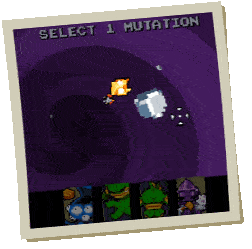
These mutations then have a short description supposedly describing their effect, giving you the illusion of transparency. In reality, the mutation descriptions are very vague, and don't list other features and side effects almost each one of them has.
'Trigger Fingers', "kills lower your reload times", also shows a visual aid in the form of glint once the weapon is off cooldown, helping you regulate firerate; 'Last Wish', "full HP and ammo", can remove the curse from a Cursed weapon that cannot be dropped otherwise. It is also used to open a secret area. 'Gamma Guts' - "enemies touching you take damage"; what this fails to mention is that:
If contact with you kills the enemy, you don't suffer any contact damage yourself.
If contact kills the enemy, you emit an aura around you that damages enemies nearby.
This is a massive oversight, considering enemies usually deal contact damage and a lot of it. The game trains you not to get close to enemies by outright killing you if you run into them, then breaks this rule seemingly out of nowhere. Suddenly you can kill instakilling enemies by touching them, bosses by touching them, powering through entire hordes of mobs by running into them - and are never told that this will be the case.
But wait! It gets worse. You are invulnerable to contact damage from very specific enemies only when you are on the move. If you stand still, enemies that cannot be killed by a single frame of damage (that is, 6 HP or less) will still damage you and stay alive.
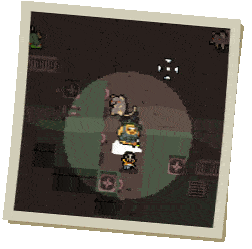
Behind the scenes, damage you deal is calculated first, then the enemies', as in most Roguelikes; the frame in which an enemy gets hit is a "hitstun", also a state in which they cannot hurt you. If you move into an enemy with <12 HP at the moment of contact, the first frame will "stun" them and the second will kill them, thus no damage is dealt to you.
Moving into an enemy usually guarantees at least 2 frames of contact, as opposed to standing still - in which they come in contact with you for 2 frames first (stun with one and deal damage with the other), then the two of you are pushed away.
Now imagine having to figure this out on your own; not only do you not know the exact HP of enemies but roughly how many shots it takes to kill them, you also need to understand the inner workings of the game and its engine - what the animations and frames do in GameMaker, how they correlate to hitboxes, and why the hell you die in some instances of using the mutation and in some don't.
If these arbitrary rules don't sound like some exploit or bug to you, I don't know what will. I'm all for vagueness, especially in games designed around "mystery"; however, picking the game apart just so you can effectively use one perk is excessive. Nearly all mutations have these little "tricks" to them, although this is by far the worst example. You never learn this stuff on your own; the game doesn't encourage experimentation, nor are there any grounds for you to test these features upon because of the game's unforgiving nature.
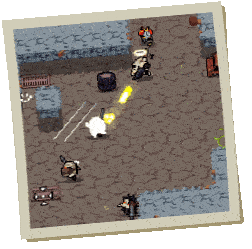
It is truly a shame. There are no new things to unlock as you progress through the game. No cosmetic changes or set bonuses, no upgrades with drawbacks that would require consideration on the player's part. Nuclear Throne does not attempt to compete with other games in this department.
You will always feel inclined to pick "failsafe" upgrades so that you don't get instakilled, run out of ammo or health, or get screwed in some other "fun" way. Having your run end from quite literally any point in the game because you didn't have one out of two very specific mutations is not good game design.
Keeping the tensions high is one thing, failing to empower the player to a point where they feel relatively safe, or at least somewhat rewarded for their efforts, is another.
On a much more positive note, what the game lacks in mutations it makes up for in its weapon arsenal. The weapon selection in Nuclear Throne is nothing short of impressive; from ordinary shotguns and machineguns, to laser miniguns, super flak cannons, heavy auto-crossbows, and goddamn nuke launchers - which are as every bit badass as they sound - the weapon variety doesn't leave much to be desired.
Each weapon type has its own projectiles and consumes its own type of ammo. Bullet weapons are relatively weak but fairly reliable due to a large supply of ammo, and some later variants shoot so fast they erase enemies in a single burst of fire. Shotgun pellets are shot out with a satisfying "bang!" and bounce around the level a few times before coming to a rest. Laser weapons fire in piercing beams or spheres that hit enemies multiple times.
Bolt weapons are accurate heavy-hitters that can pierce through multiple enemies. Explosive weapons allow you to barrel through solid walls and neutralize static hazards with relative ease. Melee weapons compensate for their short range by allowing you to deflect projectiles back at the shooter, and also to swing at enemies through solid tiles, another part of the meta you'll eventually learn to exploit.
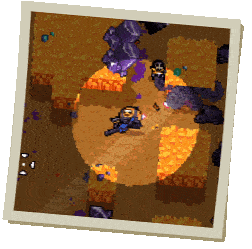
Perhaps the most fun thing about the entire system is its various weapon crossovers. A shotgun that fires bolts in a wide arc? Check. A bullet-type weapon that fires bouncy shotgun pellets? You got it. A laser hammer that hits enemies multiple times and destroys projectiles? No problem.
Fire and toxic weapons deal constant damage in the affected area. Blood weapons destroy projectiles, but damage the player on miss. Some weapons fire seekers that home in on enemies, or discs that can also damage the player. Nuclear Throne has every conceivable weapon type in its selection, rivaled only by Enter the Gungeon released half a year later. These aren't even the really fun ones.
It then comes as a great disappointment that you rarely get to use them effectively, and if at all, due to one major drawback: "weapon tiers".
The weapon tier system in Nuclear Throne replaces the random weapon drops otherwise present in other Roguelites. Every stage you beat unlocks more weapons that have a chance to drop from that point onwards in that particular run. In other words, the further you venture out into the wasteland the better the weapons will supposedly become. The obvious advantage of such a system is that you are rewarded for surviving and making progress by being given better tools to deal with your surroundings.
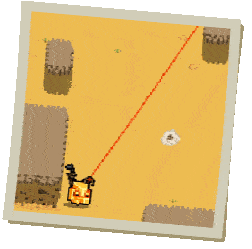
The less-obvious disadvantage is that some weapons are locked behind arbitrary tier caps that may never be reached to begin with, all depending on RNG. That's not to say other Roguelites don't do this, but they don't do it as blatantly. The upper weapon tier droptables include lower tiers, while the same can't be said the other way around.
Essentially, later stages can drop weapons from earlier stages, and enemies drop weapons from lower tiers but not weapons from higher tiers up (unless they're Cursed, which doesn't happen often). This makes the game drop the same weak weapon multiple times in one run, to a point where you can see the same crossbow or machinegun 5-6 times in a row. These weapons end up taking the place of what could have been the more unique and diverse weaponry the game has in store for its players.
The main gripe I have with the weapon system lies yet again within the ammo restrictions mentioned earlier. An ammo distribution system rooted in RNG is completely absurd for a game that's supposed to require "skill".
There is almost no decision-making to be involved in picking up ammo; while "not missing" does generally have a positive effect on your ammo pool, when it comes to human error the game gives you barely any leeway to stick with one particular weapon setup. Gimmicky weapons become risky to use, unless you have ammo-focused or weapon-specific mutations.

If you do not, sticking with the weaker weapon variants becomes the optimal choice, making you miss the opportunity to try some of the more wacky and fun things the game has to offer. You may eventually be forced to switch cool weapons out to different weapons that draw ammo from different pools, and hope that random chance will fill the old ones for you.
That's not to say the weapons in NT are not fun to use, they very much are. That is, if the game wants you to have them, or if it decides you are worthy of receiving ammo for them. Drops are controlled in this manner so you don't get "overpowered" right off the bat, which is understandable to a degree, but the weapons you do get may not even be able to compete or scale with enemy damage and health on later levels.
Nuclear Throne perfectly demonstrates why procedural generation is a hindrance to a game if not implemented into it well. The levels in NT are very inconsistent. The game will either generate tight corridors with barely any wiggle room to fight in, or very large open areas in which you are greatly exposed to enemy fire. It almost feels like there is no in-between.
Enemies are placed in the level at random, so one run can have a certain stage be easy because of weak enemy composition, while another can be grueling due to elite enemy spawns. Tile placement is irritating; corridors will often have a very narrow entrance, usually 1-tile-wide, and in combination with the isometric view will impede your progress as you find yourself running head first into a wall, or your bullets stopped short by corners of randomly sprinkled wall tiles.
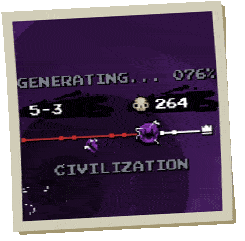
There is no "exploration" in the game per se. The levels never generate any interesting landmarks or elements to interact with - NPCs, shops, shrines, altars to name a few. Each level has one ammo chest, one weapon chest and one radiation canister in it.
There's no currency to spend on shops, upgrades, weapons or recruits, no NPCs to talk to in order to unlock new items or learn about the post-apocalyptic world the game takes place in, no crafting system with which to obtain items, and most importantly, no reliable means for you to gain any additional loot or items throughout the run.
Nuclear Throne does not have secret rooms, but rather secret areas. These areas double as shortcuts; they either replace a stage, or make you bypass a whole area entirely - rather than storing loot or lore pieces like in other Roguelites. The game sets a very clear and definitive path for the players, and this, unfortunately, again results in very samey playthroughs.
The screenshot showcase on the Steam page spoils all the areas for you before you even buy the game. If you thought they were merely a preview of what other creative things are in store for you once you complete the purchase you were gravely mistaken. Even if you don't look through the screenshot section, your first few runs will show everything there is to be found in the game, and the appeal of the uniquely-themed levels / enemies will quickly wear off.
The same 7 areas persist throughout every single run in the very same order. Every other area has its own boss assigned to it. You fight the same enemies assigned to each area. There are 15 stages in total, with the last one being the final boss fight; I would like to clarify that this in itself is fine. Every Roguelite has the very same level structure for the most part. What is not fine is how fast you beat each stage.

The first few stages in the game can be beaten in about 10-15 seconds - later ones in about a minute. The entire game can be beaten in less than 10 minutes. This is horrendous for a $12 title that never goes on sale. The game pushes you to get to the next area as fast as possible, in which you'll kill some more enemies and keep doing so until you've reached the final boss fight.
You don't get to decide what item to buy from a shop, what challenge to complete in order to unlock an item, how much health or currency to gamble on loot, or anything else of this nature. The game feels completely uninspired in that regard, and the pacing feels off as a result. It's almost like a mobile game; you either play terribly to a point where you lose within the first 2 minutes, or play "well" enough to beat it in 12.
If you don't enjoy repeating the same levels over and over again, I am sure you will be delighted to hear the game is artificially lengthened by a concept called "loops". This is another terrible design philosophy that has plagued each Vlambeer game up until this point. If you kill the endgame boss in a certain way, instead of the credits roll you get to go through the entire game again, this time keeping your weapons and mutations.
With that comes a rise in difficulty; not different enemies or enemy behavior, mind you, but way more enemies spawn per stage now, with slightly more health. A "loop" is, in essence, blatantly recycled content. Post-loop, the weapon tiers contain 18 existing (but objectively better) weapons, and 5 new enemies, all 5 of which are "elite" versions of enemies you have already encountered pre-loop.
Having to go through the same 15 stages just to see this pathetic amount of what people consider to be "new content" was not an enjoyable experience for me. I feel there were ways and means to introduce freshly-themed levels and enemies into the post-loop structure to make the game more interesting. However, slapping more enemies onto the same level layout and calling it "content" is apparently much easier than coming up with original ideas for a truly inspired endgame.
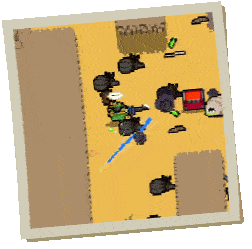
Looping is part of Nuclear Throne's incredibly weak meta-progression system. If you're not familiar with the term, "universal progression" serves as a way to empower the player by permanently unlocking things as they complete objectives or otherwise play the game for an extended period of time. There are 4 forms of such progression in Nuclear Throne: characters, alternate character skins, golden weapons, and crowns.
Attempting to unlock the characters in NT will not keep anyone entertained for long, as all but two (out of the 12) can be unlocked in a single 10-minute playthrough. I'll be generous and give that a 2-3 hour session for an inexperienced player. The real enjoyment comes out of trying to unlock "B-Skins" - an alternate character sprite - which have ridiculously high requirements; it is certainly what kept me playing the game this long, despite the skins having absolutely no effect on gameplay.
The character selection is a mixed bag. Each character has their own Passive and Active abilities. With that said, most characters are not very useful by default. Fish has a roll ability that essentially boosts it in one direction only. It is not the Enter the Gungeon diveroll that makes you invincible to projectiles; it only serves to move you forward in a fairly predictable pattern. It's a way to escape the pull of the exit portal and nothing more. It does get more ammo out of ammo drops, which is nice.
Chicken starts with the worst melee weapon in the game - a Katana. You'd think a sword would be more powerful than a Wrench or a Shovel, but that is not the case. Rebel can spawn weak AI allies by sacrificing health, making her already small health-bar smaller while her allies die within a short period of time. Plant is fast and can slow enemies down in the area of effect of its seed. Robot finds weapons from higher tiers up and can regain health by destroying them. Horror sees more mutations, and can fire a beam at the cost of some XP.
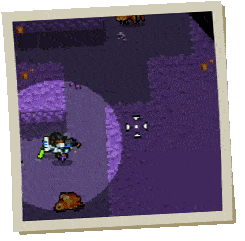
Most of these characters rely on a specific mutation ("Throne Butt") to improve their basic ability; without it they play like "just some character with gun", and the use of their Active is not crucial to the success of each run. On the other hand, some of the characters are powerful right from the get go, and choosing to play them is more optimal, if not simply easier.
Eyes can pull items towards and enemies away from her; it is one of the few Active abilities players can use indefinitely without any drawbacks. Rogue can call in explosive airstrikes at will, and starts with a rapid 2-shot burst rifle, which is a break from the otherwise mundane revolver each of the other characters start with.
Steroids fires all weapons in full auto and can fire both primary and secondary without the need to switch between the two, allowing for some very powerful and destructive weapon combinations. Crystal spawns with more health and can shield herself at will, making herself invincible to most types of damage. Y.V. can double each of the weapon's projectiles; this applies to all weapons, and makes even the most basic ones far more powerful.
Using some of these has been most enjoyable for me, especially Steroids. I never had more fun shooting two full-auto shotguns at the same time, annihilating everything within reach. Crystal is a good all-around character and is a mostly safe way to get to the lategame. Rogue was just fun for me to play; orbit-striking parts of the level to make way while fighting hostile police units who roll around and throw grenades at you was very enjoyable, since they're probably the only interesting or capable enemy in the game.
Y.V. can turn even the simplest of weapons into a tool of mass destruction, and has a palace full of guns you can pick up and use if you manage to reach it. These were some of the best times I ever had with any Roguelite, and my hat goes off to the devs for turning the levels into a sandbox with these characters. It is a shame that one of the few positive aspects in the game is overshadowed by the awful implementation of the other systems.
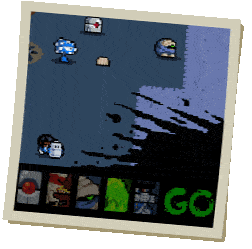
Golden weapons are alternate starter weapons that can be unlocked for each character to use in place of their anemic six-shooter. They're a breath of fresh air for two main reasons: they provide higher flexibility in playstyle (with golden weapon variants being available for all 6 weapon types), and they significantly outperform their weak, non-golden variants. They are probably my favorite part about this game.
My main issue with the system is that you can only use one golden weapon at a time. The selection screen allows you to choose between the 12 available crowns, but for some reason not between multiple golden weapons. This yet again feels like an arbitrary handicap designed to make the game more tedious and annoying to play.
Furthermore, the earliest golden weapon tier is unlocked through an obscure secret area, a secret area you may either not know of or may not have the means to access, since accessing it depends on one very specific weapon drop. That secret area is only hinted at in one random tip appearing across the stages, and it is very likely for you to have to visit the Wiki in order to find out about it - ridiculous, considering it is an entire form of meta-progression missing in your game if you don't even know of its existence.
Replacing your golden weapon with a different one requires you to go through a secret area again and again relying on the same weapon drop to open it. I had instances in which I did not get it 7 or 8 runs in a row, emphasizing just how dependent on luck the entire thing is, which seems like a major flaw to me. An alternative means to get one is to beat the post-loop game with it, which you are not likely to do since post-loop far better weapons spawn, and you won't carry a golden one if you don't know it persists between the different runs.
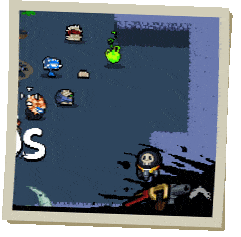
Crowns are basically the mutation mechanic but worse. Picking them up usually has severely negative consequences. One can limit your mutation selection to one, or remove all ammo and health pickups from the game. The positive effects pale in comparison - gaining one free mutation, or getting "more" (an 8% chance) weapon drops from all enemies.
I understand that crowns are meant to be a means to boost your score, but scoring higher gives you nothing but bragging rights in return. Taking crowns never seems worth it, considering they completely cripple your character; I don't see why you'd elect to do that, rather than simply play the game normally.
Nothing in this entire progression system is both practical and can keep a player playing for more than a few hours. You can't unlock new weapons, new mutations, or new abilities. You don't improve your character selection hub or gain permanent stat upgrades. The meta-progression is not as empowering as it should be, and feels like yet another rushed, overlooked aspect of this game.
Pickups fade and vanish if you don't reach them fast enough, which is a timeframe of about 7 seconds. Coupled with the awful generation of the levels, you are often put into a position where you are being suppressed by half a dozen enemies in a large open area, and picking them off from off-screen takes precious ammo and health away from you. Yet, if you prioritize the loot, you either run into heavy opposition which easily wipes you off the map, or end up failing to squeeze into some tight corridor, missing the time window.
This, for all intents and purposes, is punishment for completing the sole objective of the game, which is simply killing enemies. It is punishment there is absolutely no need to impose on your players. This feels like yet another obstacle put into the game to make slogging through the levels as inconvenient for the player as it could possibly be.
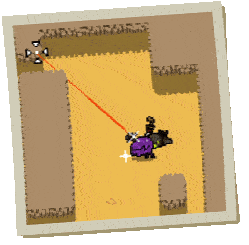
With one stage beaten you get forcefully transported to the next through a portal. The game never tells you the portal appears around the corpse of the last enemy killed, and it's not as obvious as you would think. If you neutralize a hazard, it will appear in place of its debris; only one hazard, though, because two or more and the corpse rule applies again. Except when you open a rads canister, then the portal appears in its place.
There is no feasible reality in which these rules actually make sense, so you're often left wondering where the portal will appear, and how much longer you will be able to collect loot for before being ripped out of the stage for good and sent down into the next one.
I don't understand why the portal couldn't be an interactable entity the players choose to enter at will. If the portal neutralizes a hazard that turns out to be explosive, and you don't have the "Boiling Veins" mutation, and are found within its vicinity, you die - killed by the next stage without even entering it. Why? Just because. The portals also open weapon chests when spawning close enough to them, making you lose the 25% chance of the next level containing a larger weapon chest with more guns in it.
You don't get to "secure" the area or have a breather from the ongoing battle, you just get thrown into the next area instantly if you are unfortunate enough to be anywhere near where the portal spawns. This often leads to you unintentionally skipping on important loot, health pickups, and rads. The annoying part is that you can still collect loot while being pulled in, it's just that you don't have a way to open chests from afar (unlike rads canisters which can be shot open). Configuring your weapon setup is made harder as a result.
Furthermore, since the game often generates long, tight corridors, secret areas you otherwise would have access to (Y.V's car or the sewer manhole, for example) can get potentially blocked off by your own way out, with no way to move it or bypass it. There are no enemy or loot indicators on screen, so accidentally killing the last enemy without knowing that may transport you to the next level unintentionally.

The behavior of the AI is highly inconsistent. Simply put, enemies never telegraph they are about to attack, and the attack patterns do not seem to be dependent on timing or line of sight, but rather on how many enemies are currently on screen - another rule never explained by the game but rather hinted at in one of the many tips appearing across the stages.
This is a problem when you need to get closer to enemies - like when you're using a melee weapon or when you're picking up loot; whereas in one stage you will be able to wipe out a whole squad of bandits without them as much as looking in your direction, the first enemy that spawns next stage can splurt out a 3-shot-burst at close range, removing a huge chunk of your health if not outright killing you.
Props and various destructible objects are sprinkled throughout the level, but don't serve any real purpose. You cannot utilize any of them effectively; they don't block line of sight and they aren't strong enough to properly take a beating to save you. The AI likes to shoot in random directions regardless of where you are, so you can't expect to fool it in this regard. Instead, objects soak up your own projectiles, really just obstacles to the players themselves.
If in Enter the Gungeon you can kick barrels filled with explosive gas or acid, create your own pieces of cover out of tables, and hide behind crates and statues effectively because the AI actually tries to shoot you, in NT you cannot be nearly as strategic. This is what you can expect: accidentally stepping in front of a cactus or pipe with an explosive weapon and blowing yourself up, ending the run instantly.
The nail on the coffin that is Nuclear Throne's design philosophy comes in the form of its poor performance. The game was released at the end of 2015 running on the GameMaker engine, and to this day it is still locked to 30 FPS with no ability to unlock the framerate. Having a game be locked to 30 FPS in this day and age is unacceptable. Framerate has a proven impact on player reaction time and devs should have allowed for greater customizability in that regard.
Worse yet, the Fullscreen settings of the game are limited to a 4:3 aspect ratio, and Vlambeer actually attempted to justify that with the most asinine excuse imaginable. Not only do enemies have no problem shooting at you from offscreen, and seeing more of it would only be fair, I don't feel I own a 1080p monitor to have the game's window be minimized for me, then told how it woudln't be "fair" to my computer-controlled opponents.
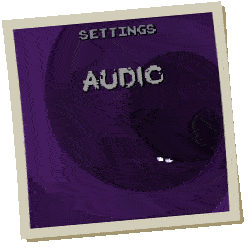
Other Roguelites managed to implement Fullscreen features without any issue, now it is simply a manner of screen space not being utilized properly, breaking immersion and ruining what little enjoyment I could possibly get out of this game.
I had played with the Fullscreen mod for the longest time, up until the most recent update (99r1) which "fixed" this "exploit". The only way to play Fullscreen now is by using the NTT mod, which disables achievements and enables a console that allows you to cheat. There is no alternate way to play Nuclear Throne in a proper widescreen aspect ratio.
Nuclear Throne was never about skill to begin with. Actors can instantly kill you because you didn't have one or two specific mutations that may have very well not appeared in your selection pool to begin with. Most runs yield bad weapons, while the few that remain do drop weapons that scale well with later stages, all at the whims of RNG. It is left up to the game to decide whether you get ammo for said weapons or not.
Drops are controlled meticulously, to a point of frustration. The provided upgrade lineup is simply too boring to enjoy. The game is a repetitive and dull experience of either dying or winning in mere minutes, neither of which brings any closure or satisfaction. You repeat the same process with the same weapons and same upgrades in a short period of time, which only tires you out and makes you dread starting runs over.
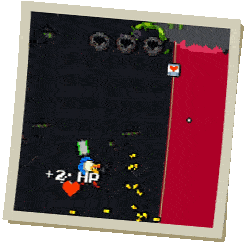
You are never properly empowered or rewarded for your efforts; no new items or improvements to existing ones, no new weapons, characters or character hub, in fact no permanent improvements to existing skills or attributes whatsoever.
Nuclear Throne wants to have a natural difficulty curve and skill ceiling, but also be a good Roguelite. As far as I'm concerned, it fails to do so on both fronts. It does none of the things I would want my Roguelite to do for me. It suffers from neglect both in terms of features and technical aspects that should've been addressed by the devs a long time ago.
Vlambeer themselves deem their creation the equivalent of a gaming masterpiece, and as such have decided to never put the game on sale. They are also very defensive when its many flaws become grounds for criticism or ridicule. A poorly constructed Roguelite with a rabid following that only ever seems to take interest in games that can be played the "coffee break" that they have made up. I cannot fathom how this game is 96% Overall Positive on Steam, and cannot in good conscience recommend it.